
Which mobile phone has the best camera: Samsung Galaxy S9+ vs Huawei P20 Pro vs Sony Xperia XZ2
Smartphone manufacturers are going all out to woo customers with great camera set-ups, from Samsung’s variable apertures to Sony’s 4K HDR video capability to Huawei’s triple cameras. We test them to find which is the best
In today’s smartphone wars, the camera is the only battleground left. While phone geeks still mull over features like battery life, display panel quality, processor performance or artificial intelligence (AI), all the average consumer cares about is whether the handset takes good images and videos.
That is why Huawei, Samsung and Sony each recently developed new camera systems that are not just powerful, but allow each brand to make a “world’s first” marketing claim.
Huawei P20 Pro first impressions: triple rear cameras, amazing lowlight stabilisation
Samsung’s Galaxy S9 and S9+, for example, have “the world’s first variable aperture” phone camera. Sony’s Xperia XZ2, meanwhile, sports a camera that is “the world’s first to shoot 4K HDR videos and 960fps slow motion videos at 1080p”. Not to be outdone, Huawei’s just-launched P20 Pro has “the world’s first triple-camera set-up” on a phone.
But which “first” is the best? Given every smartphone worth its salt these days can capture perfectly fine photos under great lighting conditions, we decided to pit the three new flagship models against each other to find out which perform best in challenging shooting conditions – such as really low light scenes or zooming shots.
All our photos, except for one set, are shot in auto mode with no focus or lighting tweaks, as we want to mimic the point-and-shoot method that the average consumer tends to use.
Night shots part I
This first set of photos was shot in Hong Kong’s Tsim Sha Tsui East entertainment district, with a variety of light and shade going on.
Huawei P20 Pro

The Huawei P20 Pro was most impressive, producing a stunningly balanced image that clearly works well under the conditions.
Samsung Galaxy S9+
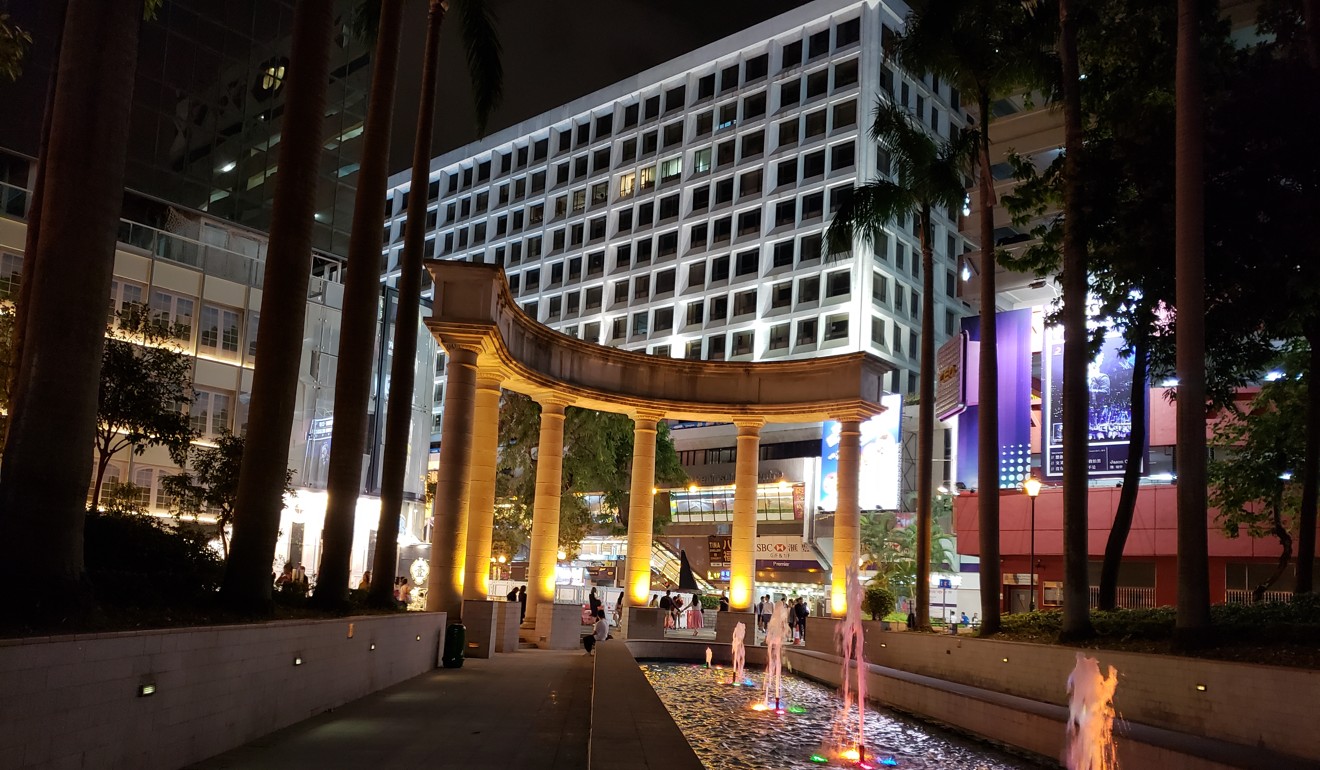
Samsung’s Galaxy S9+ technically captured the most light and “brightened” the scene the most, but at the expense of overexposing the lights at the base of each pillar and the three billboards on the right hand side of the frame.
Sony Xperia XZ2
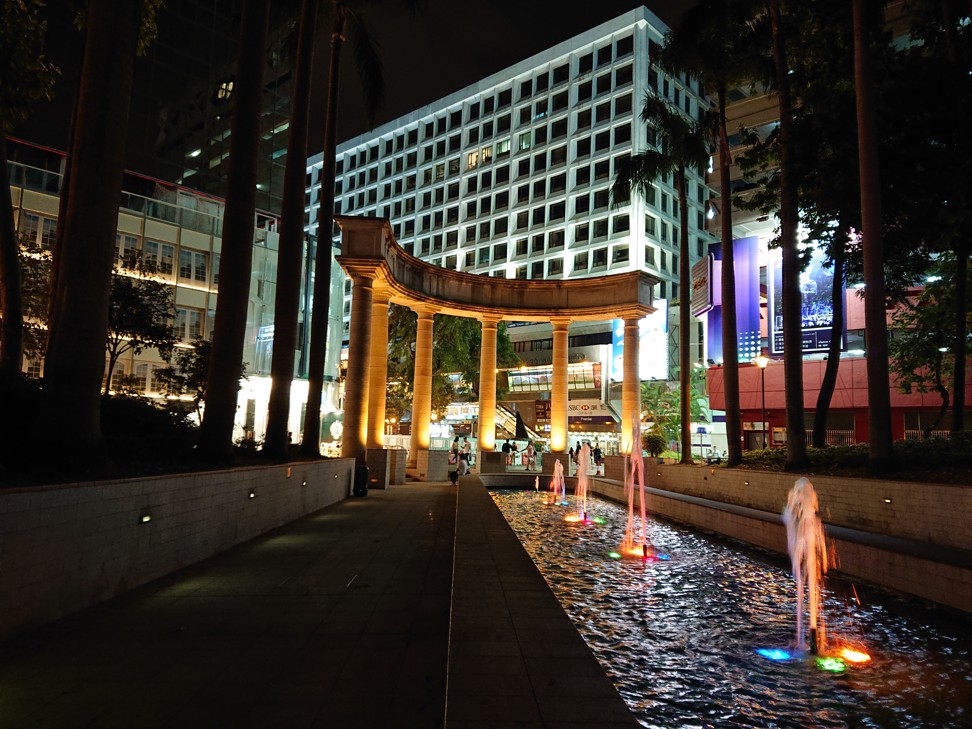
The Sony Xperia XZ2’s image is a mess: it overexposes the lights just as badly as the S9+’s photo, but couldn’t even brighten the walls and floors (in the lower left corner of the image) like Huawei and Samsung. The water in the fountain also looks much more clear in the P20 Pro’s photo.
Night shots part II
This second low light set is shot in extremely challenging conditions: in the middle of a very dark alley that leads to a very bright street.
Sony Xperia XZ2

We’ll dismiss the Xperia XZ2’s image right off the bat, as it again blows out the lighted area (the end of the alley) the most while failing to produce much of anything in the dark part of the alley.
Samsung Galaxy S9+
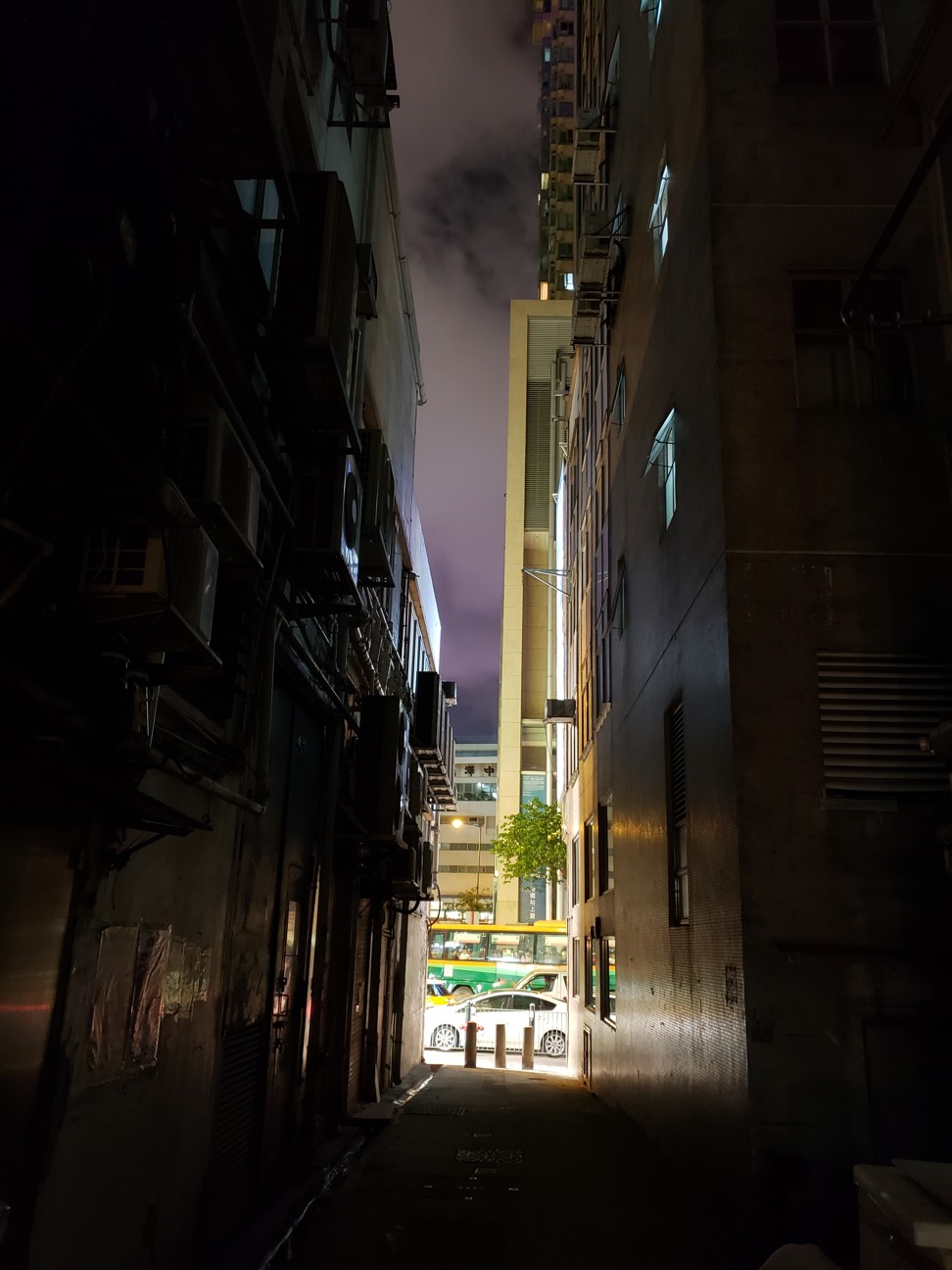
The S9+’s image has admirable dynamic range considering the tough situation, but it is again no match for Huawei’s P20 Pro, which produces an image that is much more balanced (notice the major street at the end of the alley isn’t overexposed) and less grainy.
Huawei P20 Pro

Huawei has really been hyping up the low light capabilities of the handset’s triple-camera set-up (which combines image and lighting informatio captured from all three lenses to produce one image), and in the first two sets of photos really proved that the hype is completely justified.
5X zoom quality
Next up, we shot photos of the Hong Kong skyline from across Victoria Harbour at the observation deck of Sky 100 at the International Commerce Centre. Since the distance between the ICC and the International Finance Centre Tower 2 is roughly 1,500 metres, we shot using 5X zoom.
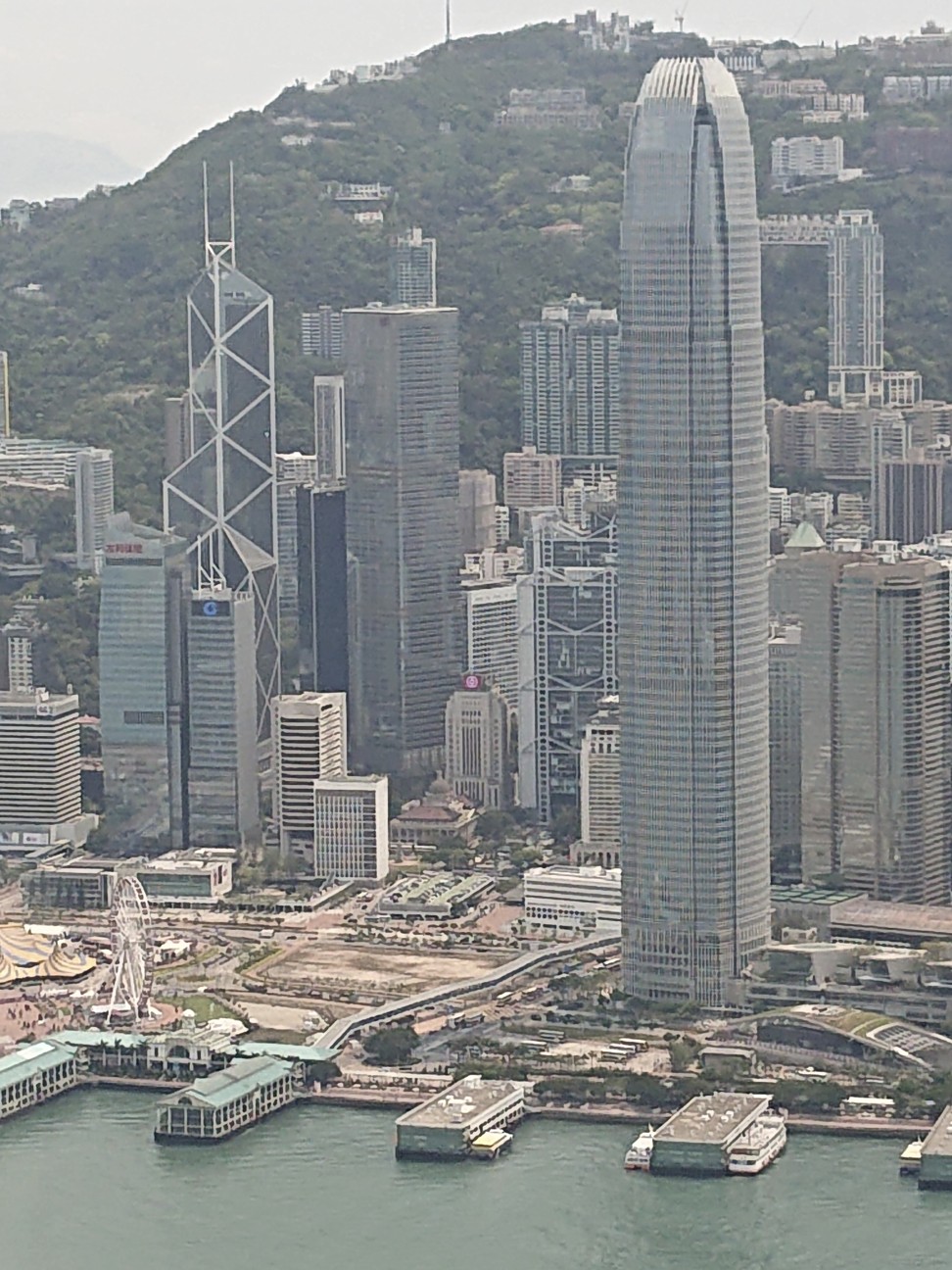
We are aware that this comparison naturally puts the Xperia XZ2 at a disadvantage, because it doesn’t have a telephoto lens like the other two handsets. It is probably not a spoiler to say that Sony’s handset loses this round too.
Samsung’s Galaxy S9/S9+
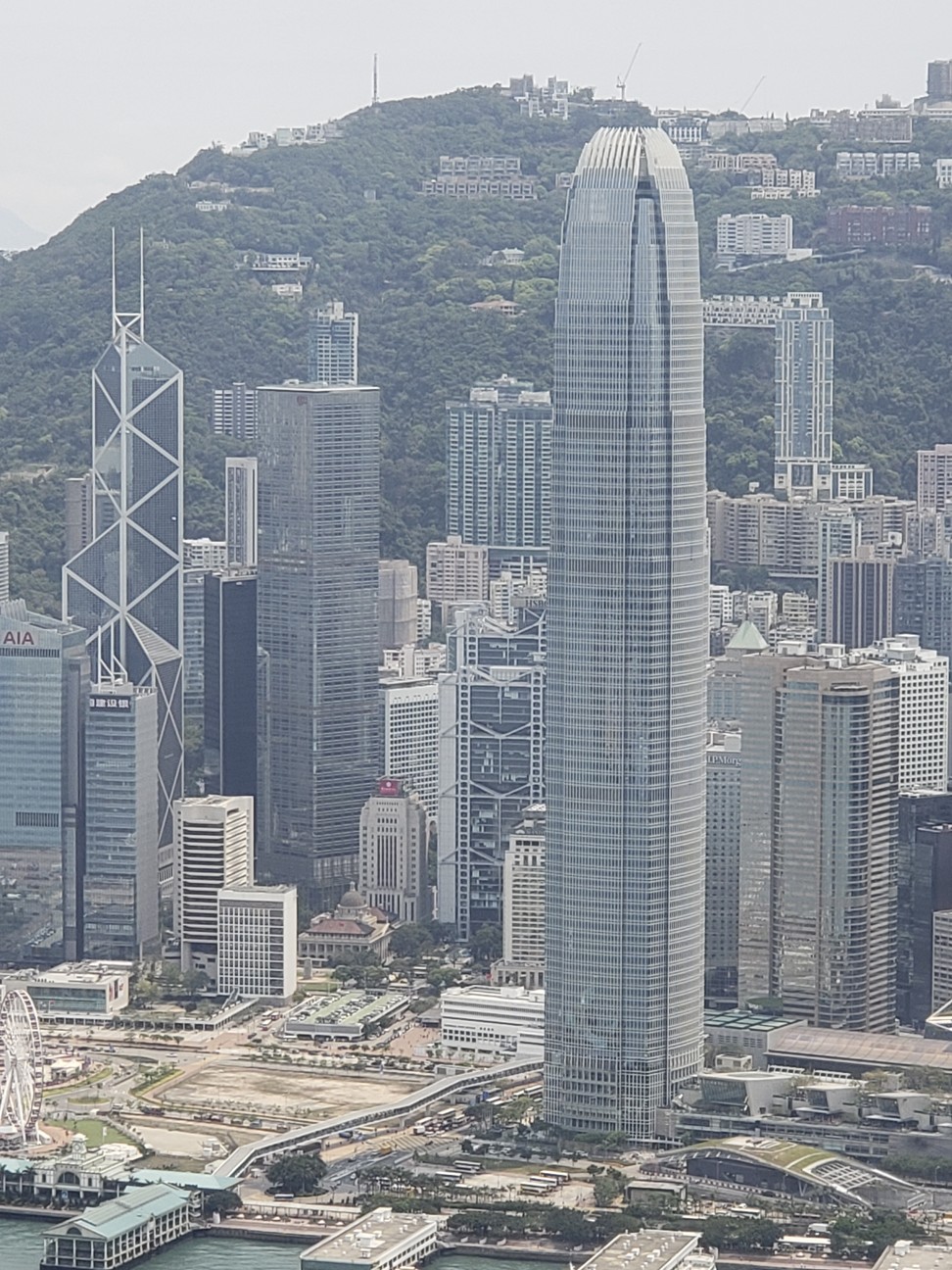
Focusing on the other two, we noticed that while the P20 Pro’s image is more detailed when viewed at 100 per cent scale – most notably, the vertical lines that run across the IFC tower are more clear – the S9+’s image has much more accurate colours.
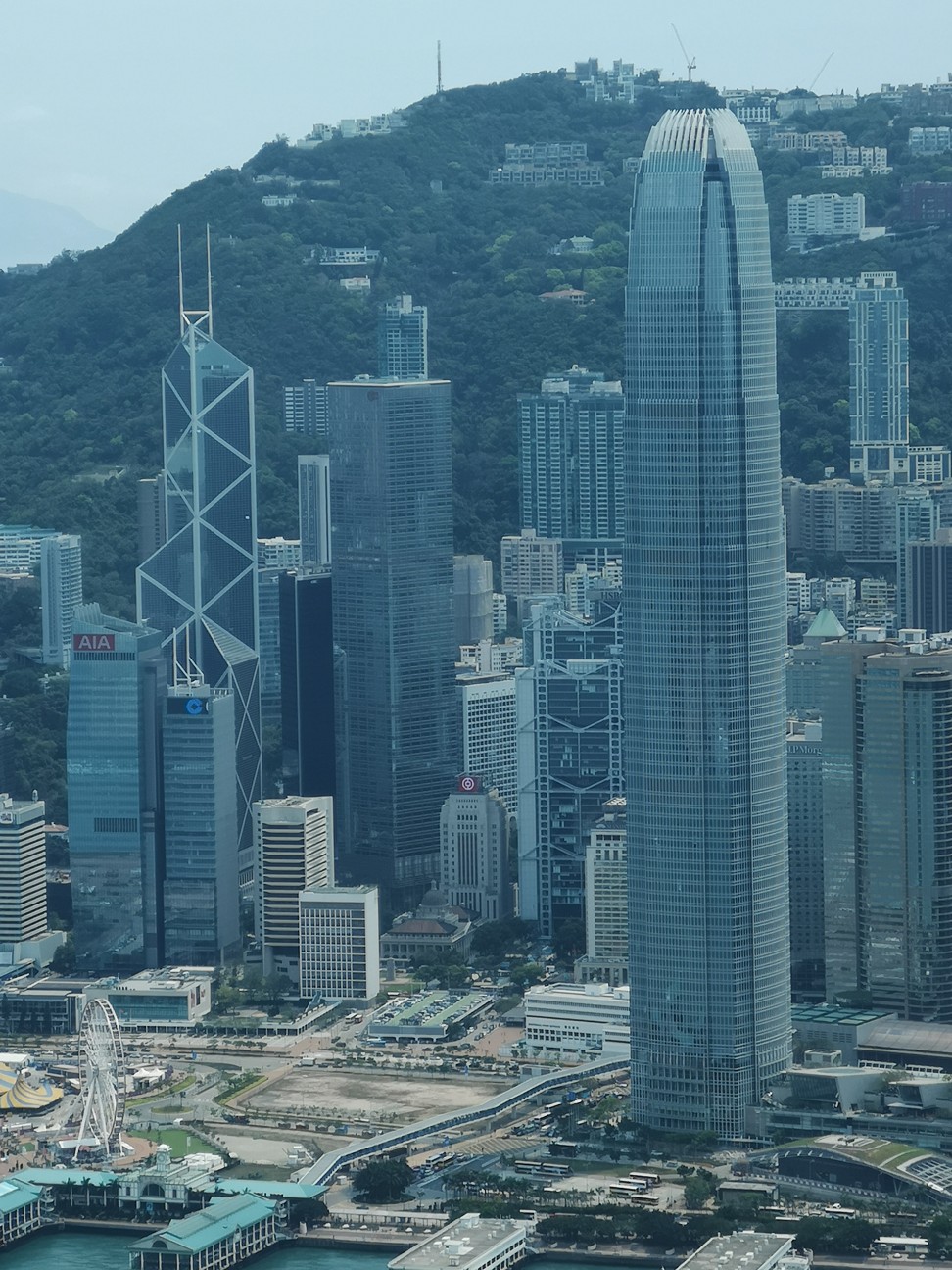
Huawei, for some reason, gave the photo a weird blue tint. Since the subtle difference in detail isn’t noticeable unless the photo is blown up, we’ll have to hand this round to Samsung.
Macro shots, auto
Samsung’s Galaxy S9/S9+

Huawei P20 Pro

Sony Xperia XZ2
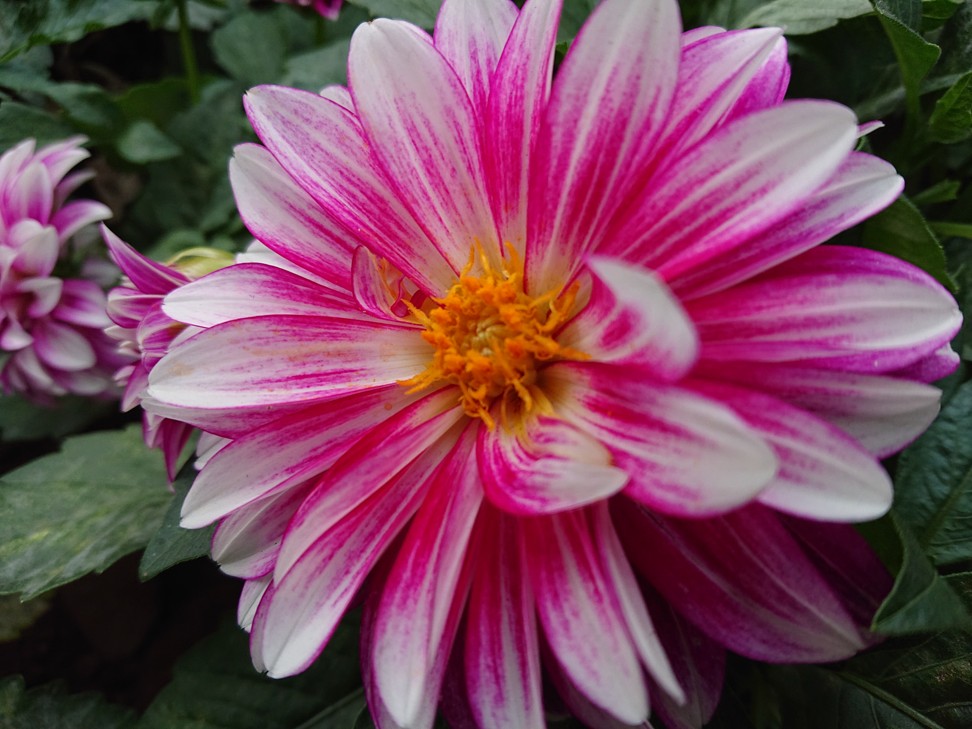
All three images above turned out aesthetically pleasing. The Sony Xperia XZ2’s camera is the only one to get the leaves’ colours accurately. But neither the XZ2 nor the P20 Pro could quite handle the two petals that were bent in an odd direction towards the lens. As a result, neither shot focused clearly on that part of the flower. The S9+’s shot is most in focus and probably the best shot overall.
Macro shots, manual focus
Samsung Galaxy S9+
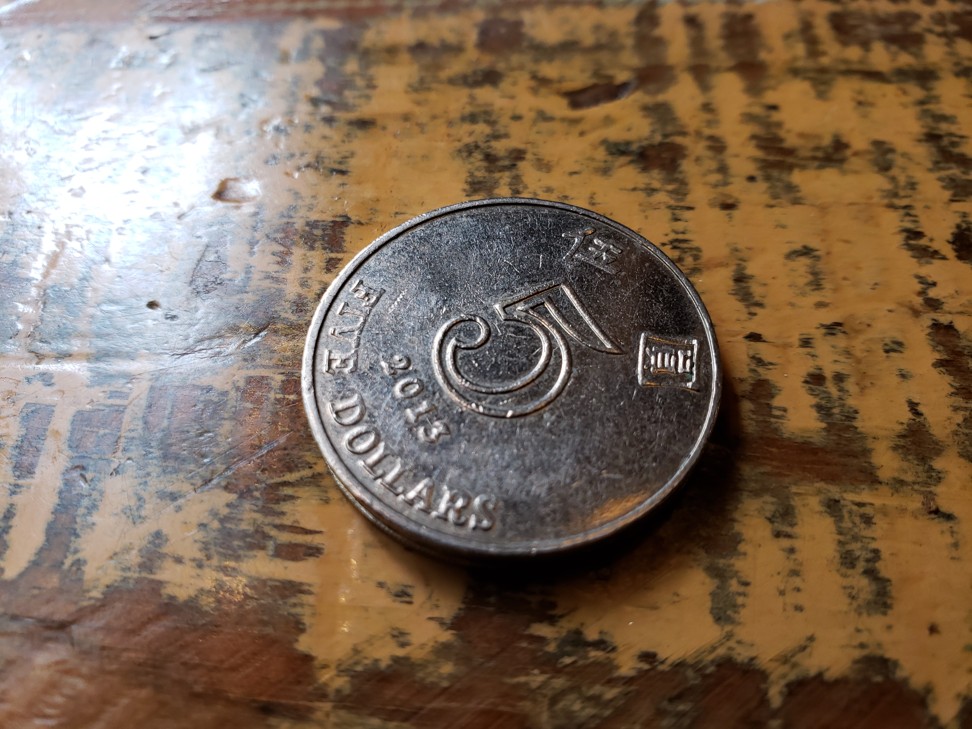
Huawei P20 Pro

Sony Xperia XZ2
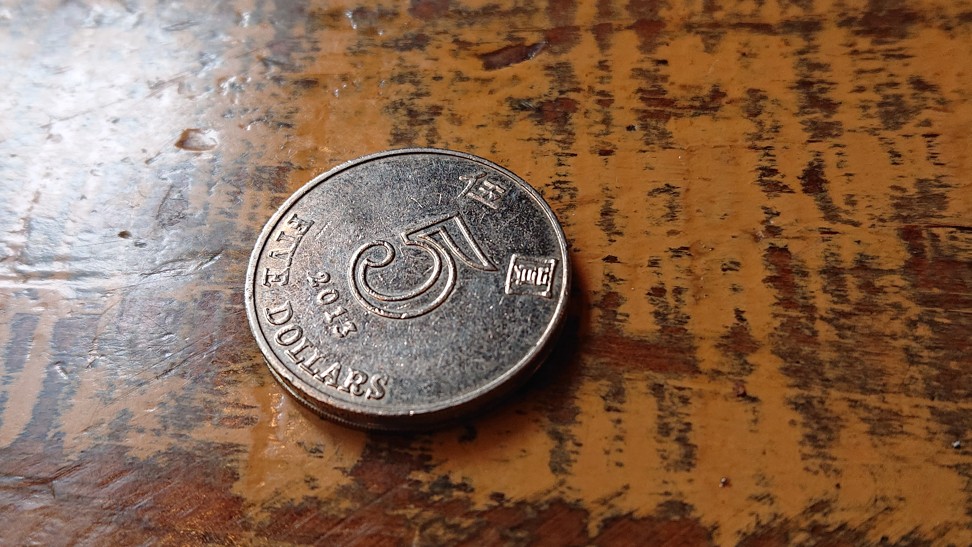
For this set of pictures above we shot in manual mode, and used manual focus to try to get as close to the coin as possible without losing focus. The S9+ clearly came out on top, getting closest to the coin. Sony’s phone, once again, fared the worst.
Bokeh portraits
Sony Xperia XZ2

Samsung Galaxy S9+

Huawei P20 Pro
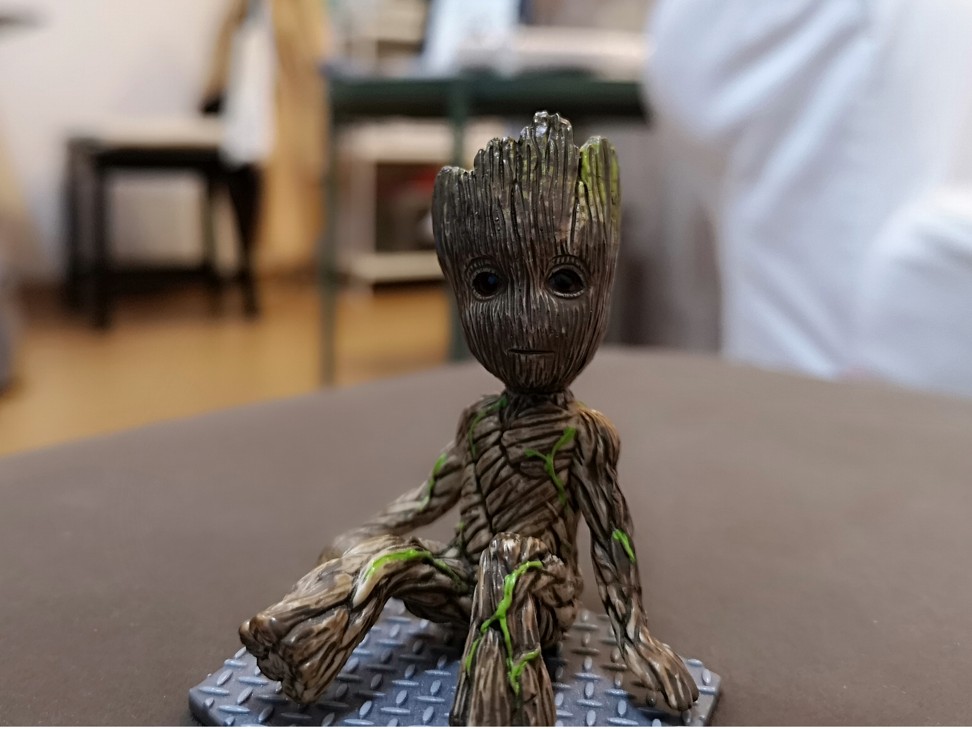
For this bokeh set above, the P20 Pro’s image is the cleanest, but the bokeh effect (the blur) is a bit too strong and artificial looking. The XZ2’s image is admirable, considering it doesn’t have a secondary camera to detect the depth of field. The S9+’s image, you may notice, is taken at a different angle; that is because Samsung’s bokeh mode – which the company calls “Live Focus” – is finicky and annoyingly difficult to use, requiring the user to stand much further back. Overall, we prefer Sony’s image by a hair.
Of course, there’s more to a mobile camera than just capturing still photos. So we tested the three phone’s video capabilities too.
As you can see from the above video, all three phones’ usually excellent EIS (electronic image stabilisation) suffered due to a lack of lighting, as each clip has a noticeable shake with each step I took. The XZ2 probably has the smoothest clip, but the dullest colours. Video quality is about the same on Huawei and Samsung’s videos, but the latter’s audio is more clear.

960fps slow motion
Last year, Sony’s Xperia XZ Premium was the first smartphone to offer slow motion video recording at 960fps, a trick that both Samsung and Huawei co-opted for its new devices. Naturally, Sony upped its game and its XZ2 can shoot 960fps at 1080p resolution, while the other two phones can only record at 720p. It’s no surprise, then, that the XZ2’s slow motion video is significantly more smooth and clear than the other two. Huawei’s clip, in particular, has a jarring lack of clarity.
Huawei Mate 10 Pro review: NPU adds intriguing AI possibilities to an already refined and powerful phone
4K video, 30fps
This is another area that Sony should have won, since the XZ2 can record 4K videos in HDR mode while the other two devices cannot. But nonetheless, the XZ2’s footage has dull colours and a grainy look, while the P20 Pro’s footage falls apart due to non-existent image stabilisation. The S9+’s footage is the best by quite a wide margin.
Conclusion
Sony mounted a late comeback, but it lost too many categories too badly at the start to finish anywhere but a distant third here.
Picking a winner from the Huawei P20 Pro and the Samsung Galaxy S9+ is difficult. There’s no question the S9+ has the more balanced camera system, as it performed admirably in every situation, whereas the P20 Pro’s video capabilities have noticeable flaws.
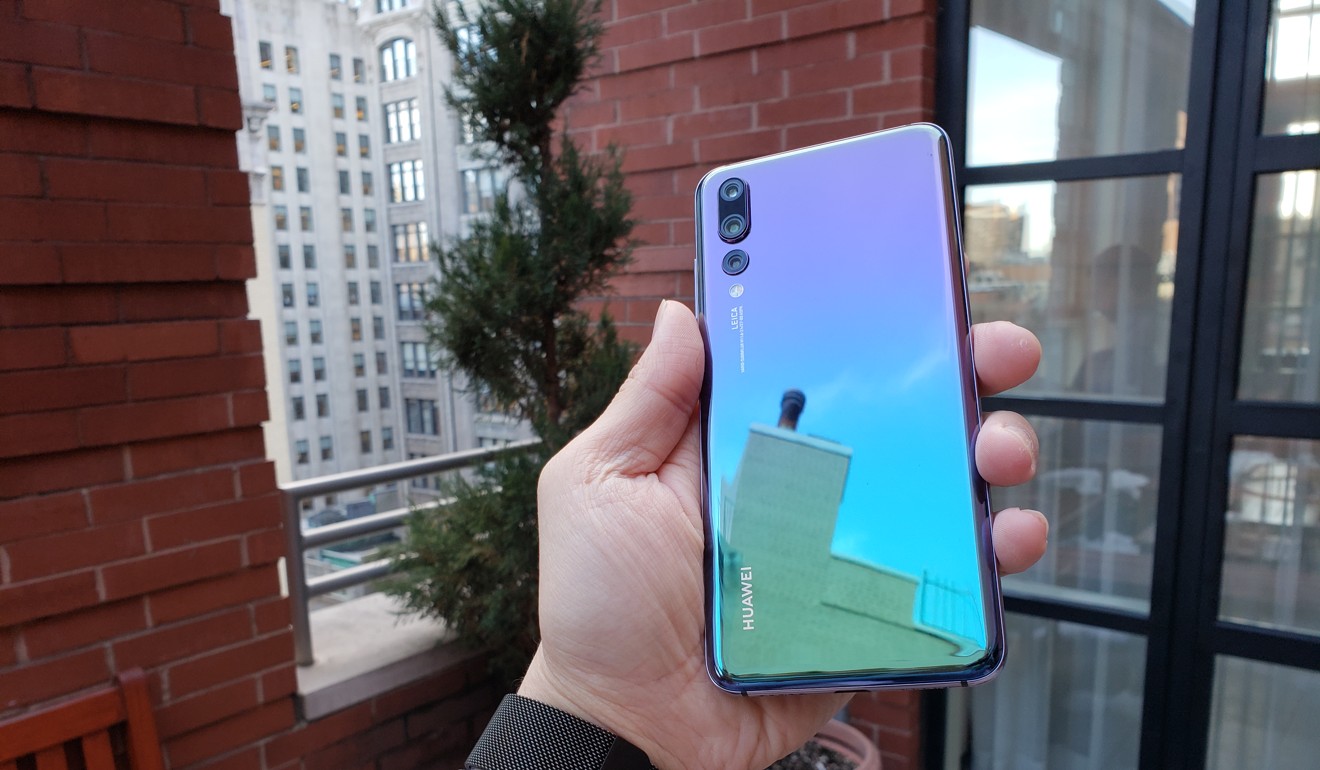
But the average consumer is unlikely to care much about how their phone shoots video in 960fps or 4K. What they’ll likely care about is if that photo inside a dimly lit restaurant or under gloomy skies turns out Instagram-worthy. And on that front, the P20 Pro consistently produces the most eye-catching shots. We’ll have to call this a tie between the two.
Samsung Galaxy S9+ full review: best camera for lowlight photos, great battery life and no front notch make handset a winner
Prices: Sony Xperia XZ2 HK$6,198 (US$790); S9+ (64GB) HK$6,998, S9+ (128GB) HK$7,398; Huawei P20 Pro HK$6,780.

